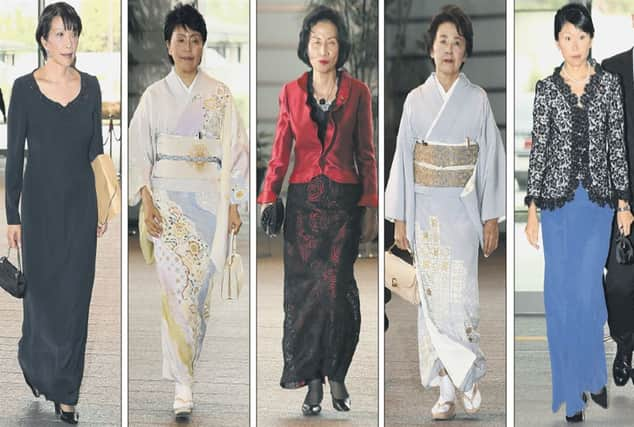Japanese PM appoints five women to cabinet


The Asian nation’s highly educated women are underrepresented in positions of power in government and corporations. Women make up 10 per cent of parliament and just 3.9 per cent of board members of listed Japanese companies.
They have long complained about the obstacles to being taken seriously at work, including equal pay and finding childcare or helpful spouses.
Advertisement
Hide AdAdvertisement
Hide AdPrime minister Shinzo Abe has said that a key part of his “Abenomics” growth strategy is making greater use of women and promoting them to leadership posts – a campaign dubbed “womenomics”, a term he has embraced.
Mr Abe – whose centre-right Liberal Democratic Party has been in an almost unbroken period of power since 1955 – has set a goal of having women in 30 per cent of leadership positions in the private and public sectors by 2020.
Having five women in the cabinet, which currently has 18 members, is extremely rare for Japan. It matches the highest number, set in 2001, under prime minister Junichiro Koizumi. Mr Abe’s previous cabinet had two women ministers.
Although ministerial positions are in some ways ceremonial in Japan, where government affairs are largely run by professional bureaucrats, expanding the presence of women in a place as high profile as the cabinet is a step toward sexual equality in Japan.
“As a woman, I am happy to have even one additional woman in power. There doesn’t have to be a reason. I am rooting for them,” said Kazuko Watanabe, who works as a public relations specialist in the port city of Yokohama, near Tokyo.
Yuko Obuchi, daughter of a former prime minister, was named trade and economy minister, probably the most prominent post, and Midori Matsushima was appointed justice minister.
Mr Abe risked offending the long line of powerful men in his ruling party, who had been waiting for promotions.
While some experts say upsetting male colleagues could weaken Mr Abe’s grip on power, others said he may strengthen his position by inspiring women, who are very active in party politics in Japan at grassroots level.
Advertisement
Hide AdAdvertisement
Hide AdIn the US, president Barack Obama has three women in cabinet positions, and has appointed women to other powerful positions such as the head of the Federal Reserve Board and Supreme Court justice.
In France, women make up about half the ministers.
The Geneva-based World Economic Forum ranked Japan 105th in last year’s Global Gender Gap Report, which measures economic equality and political participation. Iceland was number one, followed by the Scandinavian nations. Germany was 14th, the UK was 18th and the US 23rd.
Other women appointed by Mr Abe include Sanae Takaichi as minister of internal affairs and communications and Eriko Yamatani as minister in charge of Japanese abducted by North Korea. Haruko Arimura was tapped to be minister in charge of promoting women.